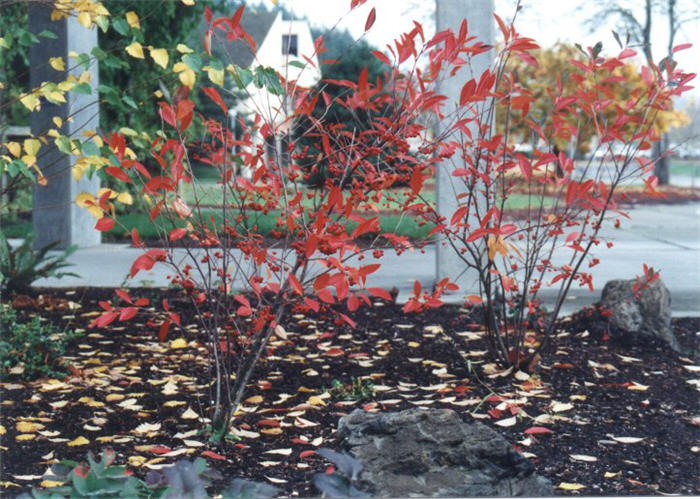| Botanical Name: Aronia arbutifolia | |
| Common Name: Red Chokeberry |

-
Anatomy
-
Culture
-
Design
Plant Type
Shrub
Height Range
6-12'
Flower Color
Pink, White
Flower Season
Spring
Leaf Color
Dark Green
Bark Color
Brown
Fruit Color
Red
Fruit Season
Winter, Fall
Sun
Full, Half
Water
Low, Medium
Growth Rate
Slow
Soil Type
Sandy, Clay, Loam, Rocky, Unparticular
Soil Condition
Average, Rich, Poor, Well-drained, Dry
Soil pH
Acid, Neutral, Basic
Adverse Factors
Invasive
Design Styles
Mediterranean, Ranch, Woodland
Accenting Features
Fall Color, Showy Flowers
Seasonal Interest
Winter, Spring, Summer, Fall
Location Uses
Background, Shrub Border, Foundation, Walls / Fences
Special Uses
Cut Flowers, Hedge, Screen, Mass Planting, Naturalizing, Small Spaces
Attracts Wildlife
Birds
Information by: Stephanie Duer
Photographer:
Photographer:
-
Description
-
Notes
Red Chokeberry is a lovely, deciduous, multi-stemmed shrub that grows 6 to 10 feet tall and 3 to 6 feet wide, with an open, soft vase-shaped habit. Clusters of white to light pink, 5-petaled flowers appear in spring, followed by abundant glossy red fruits (1/4†diameter) which appear in dense clusters along the branches. Fruits ripen in late summer and persist on the shrub throughout fall and well into winter. Leaves are oval, and glossy dark green above and grayish-green beneath. Foliage turns bright red in autumn. Common name is in reference to the tart and bitter berries which are technically edible but are so astringent as to cause choking in those who try. Fruits are sometimes used to make tasty jams and jellies (with the addition of sweetners!). Fruit sweetens a bit with the frost, making the berries more palatible to birds. A number of named cultivars are available in the trade.
Grow in well drained soil; adaptive to a variety of soil types, including clay soils and dry soils. Grows in full sun to part shade, though flowering and fruiting will diminish. Also, best fall color occurs in full sun. Does not require pruning to maintain form, so prune selectively to control height (see Guides). They tend to sucker, but are not aggressively so.